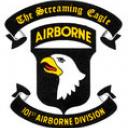Swell Directions


this guy has a series of videos on youtube explaining coastal process's
Its a good place to start and your own interest will have you looking further.


The better way to deal with all the variants is to build an adjustable reef structure, it will add maybe 30% to the cost, but will create at least 3 times more surf time AND, save a heap of study time and guesswork not to mention dealing with differences of opinions.
The 3 main reasons would be swell direction, tides and swell size. the mechanism for swell direction could be self adjusting as in the mechanism for tidal action, but to deal with swell size needs special sensors incorporated with the tide adjusting mechanism.
On headland modifications,, does anyone think permission would ever be granted for such works? There is a design for a parallel reef on the sand that would not disturb the original break. I think there lies the most cost effective and rewarding works, but a beach A frame will be first tried .


philosurphizingkerching,
The way in which different waves propagate, refract and dissapate in response to nearshore bathymetric features can all be modelled using wave modelling programs such as SWAN, SWANSURF and others. These account for different swell sizes and directions and different bathymetric features. Where the data is available, the modelling is accurate and comprehensive.
An adjustable reef idea is interesting but sounds expensive and more prone to breakage. To create a reef large enough to produce a decent wave and be adjustable sounds like a mammoth task.


Hey philosurphizingkerching,
to run one of the equations you need the bathymetric data and to learn how to run the program. You can download the SWAn program online fro there site, but it is very complex and operates in code. So Maybe you'll have moe luck than I did!
Coastalwath has a page with a SWAN diagram on their site which updates with the conditions, worth looking at



One aspect that is crucial to surfing reef designs is swell direction.
We need to understand swell direction angles and how the different angles react to a surfing reefs orientation.
What is the difference in angle between South, Southeast, East and Northeast swell directions.
Here is a scenario.
A long east facing beach.
An east swell approaches at zero degrees, parrallel to the beach.
What angle does a SE swell aproach at.
What angle does a South swell approach at.
And what angle does a NE swell approach at.
Anyone got any opinions or theories on this subject?
Philosu.